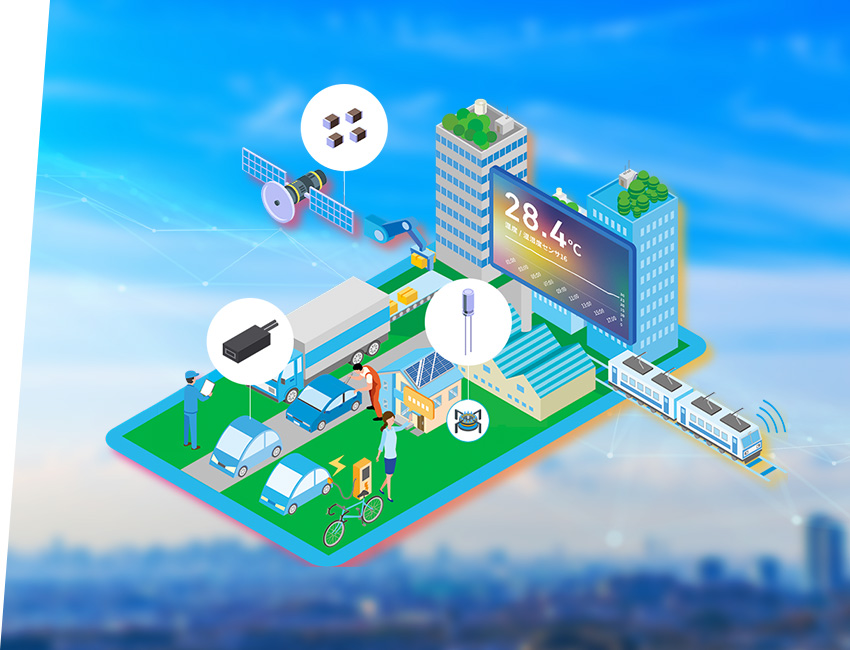What is Temperature sensing?
Temperature sensing is "sensors or technology
for detecting the temperature of an object or environment".
-

What is Temperature sensing?
Temperature sensing is used for a variety of purposes, including industrial process control, energy management, environmental monitoring, and temperature monitoring in medical devices, automobiles, and household appliances.
Several different technologies and sensors are used for temperature sensing, including electrical sensors such as thermistors and thermal resistance sensors, metal-based sensors such as thermocouples, and infrared temperature sensors.
These sensors have different characteristics in terms of temperature measurement range, accuracy, response time, and resistance to environmental conditions, and the appropriate sensor must be selected depending on the temperature sensing application and requirements.
Highly accurate and reliable temperature sensing technology is indispensable for improving productivity, energy conservation, safety, security, comfort, and making our society and life better.
-

Importance of Temperature sensing
Temperature sensing plays a critical role in a wide range of industries and applications.
In process manufacturing lines, it helps improve productivity, quality and energy efficiency.
In the life safety, food safety, and medical fields, it also contributes to a safe and secure life through safety management of household appliances, food quality control, and temperature monitoring of medical equipment.
In addition, urban planning and building energy management require accurate temperature data inside and outside buildings.
Today, the corporate mission includes the realization of a sustainable society, such as carbon neutrality, SDGs, and ESG, and optimizing energy efficiency and ensuring safety and security are becoming increasingly important.
Temperature sensing has therefore become an essential technology for achieving these goals.


-

Temperature sensing challenges
The main challenges in temperature sensing are ensuring high measurement accuracy and reliability.
To withstand use in a variety of environmental conditions, the performance of the temperature sensor and its impact on durability must also be considered.
In addition, highly accurate real-time detection of temperature changes is required, and the response time must be improved.
Sensor calibration is also an important item for continued use.
To solve increasingly sophisticated and diverse problems, it is necessary to combine several technologies, not just one.







